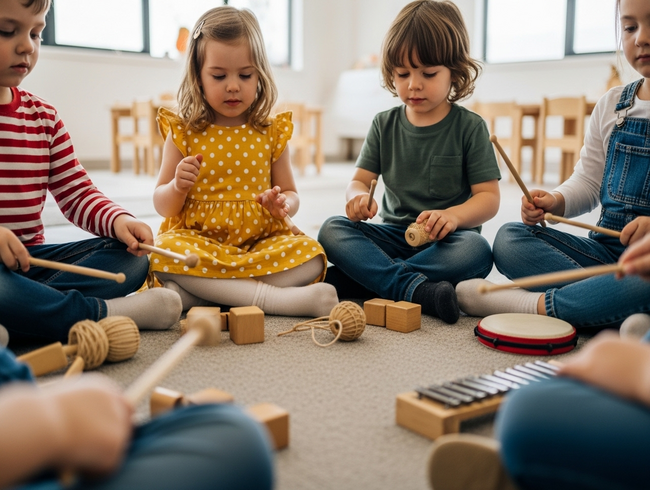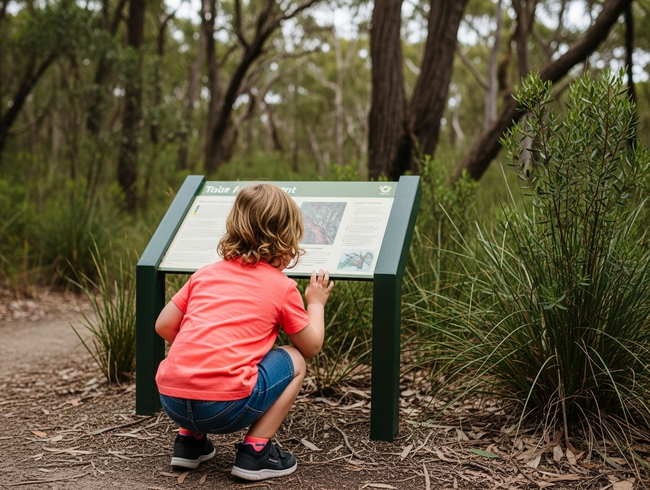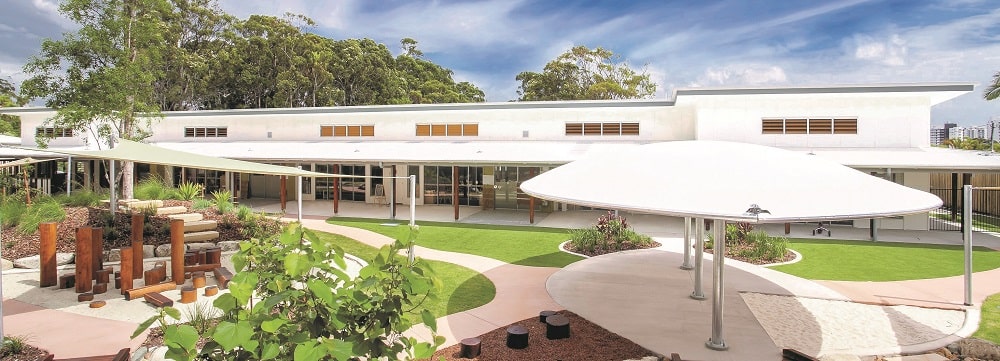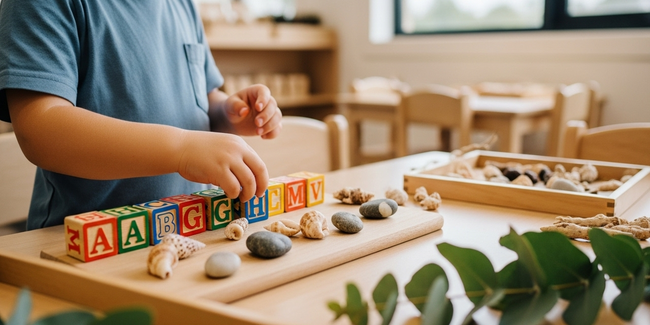Worried that preparing your toddler for ‘big school’ means endless flashcards and pressure? What if we told you the path to reading readiness is paved with playdough, nursery rhymes, and nature walks right here on the Sunshine Coast?
For many parents, the pressure to ensure their child is “ready for prep” can feel overwhelming. It’s easy to believe that formal learning, with its structured drills and alphabet charts, is the fastest route to success. However, with over 15 years of experience in early childhood education, our team has seen a different truth unfold time and again: the most powerful foundation for literacy isn’t built on pressure, but on joyful, purposeful play.

This article isn’t just a list of games; it’s a window into how children truly learn. We’ll peel back the curtain on the science of early literacy and show you why play is the most effective tool for building the essential skills your child needs. Everything we share is grounded in Australia’s national Early Years Learning Framework (EYLF), which guides our practice at Okinja Early Learning Centre & Kindergarten. Our goal is to give you the confidence that by embracing play, you are not just preparing your child for reading—you are nurturing a curious, confident, lifelong learner.
The Real Ingredients for Reading Readiness
Before a child can decode words on a page, their brain needs to build a complex network of interconnected skills. Think of it less like learning a list of letters and more like learning to cook a magnificent meal. You need more than just one ingredient; you need a pantry full of complementary flavours and textures that work together.
True literacy readiness involves:
- Tuning the Ear for Language (Phonological Awareness): The ability to hear and play with the sounds in words.
- Making Friends with Print (Print Awareness): Understanding that written text carries meaning.
- Building a World of Words (Vocabulary & Language): Having a rich bank of words to understand and use.
- The Art of the Story (Narrative Skills): Knowing how stories work, with a beginning, middle, and end.
- Getting Ready to Write (Fine Motor Skills): Developing the hand strength and coordination needed for mark-making.
Notice that memorising the alphabet isn’t at the top of the list. That comes later. First, we build the foundation through play. Let’s explore how.
1. Tuning the Ear for Language: The Magic of Phonological Awareness
What it is: Before children can read words, they need to hear the individual sounds within them. Phonological awareness is the ability to act as a “sound detective,” listening for the secret codes—the rhymes, syllables, and tiny sounds (phonemes)—that make up our language. It’s an auditory skill, and it’s one of the strongest predictors of future reading success.
Why play works best: This skill can’t be taught with flashcards. It must be developed through listening, speaking, and playing with language. A literacy-rich environment, a key component of the National Quality Standard (NQS), is one that buzzes with the sound of language.
Literacy-Building Activities to Try at Home:
- Become a Rhyme Master: Sing nursery rhymes, make up silly rhyming sentences (“Can the cat see the mat?”), and read rhyming books. The rhythm and repetition train your child’s ear to hear similar sounds.
- Go on a Sound Hunt: Pick a sound, like ‘ssss’, and go on an adventure around the house or at a local Sunshine Coast park to find things that start with it. “I hear a ‘ssss’ sound! Is it a snake? A sock? The sea?”
- Clap it Out: Help your child feel the rhythm of language by clapping the syllables in their name (O-li-ver!), family members’ names, or words from a favourite story. This breaks words down into smaller, more manageable sound chunks.
Our Philosophy in Action: This is why music, song, and storytelling are at the very heart of our daily rhythm at Okinja Early Learning Centre & Kindergarten. Our emergent, play-based curriculum is grounded in the EYLF principle that play-based learning allows children to explore, identify, and solve problems. When a group of children spontaneously makes up a song about a magpie in the playground, they are not just having fun; they are doing the critical work of phonological development.
2. Making Friends with Print: Cultivating Print Awareness
What it is: This is the moment a child understands that the squiggles on a page, a sign, or a cereal box are not just decorations—they are a secret map of language that holds a message. It’s the understanding that we read from left to right, that pictures relate to the text, and that the story lives in the words.
Why play works best: Children develop print awareness when it’s a natural and meaningful part of their world, not something confined to a book.

Literacy-Building Activities to Try at Home:
- Be a Reading Role Model: Let your child see you reading—books, magazines, recipes, emails. When they see that print is valuable to you, it becomes valuable to them.
- Explore Environmental Print: Turn a trip to the supermarket or a walk around the neighbourhood into a literacy adventure. Point out the big red letters on the “STOP” sign, the sign for their favourite playground, or the name of their favourite yoghurt.
- Give Scribbles a Purpose: When you write a shopping list, give your child a small notepad and pencil to write their own. Their “list” of scribbles holds immense meaning to them and teaches them that writing is a powerful tool for communication.
Our Philosophy in Action: We believe a child’s environment is the “third teacher.” This principle is why our learning spaces at Okinja are thoughtfully designed to be print-rich in a way that feels authentic, not clinical. You’ll find labelled baskets for toys, signs made by the children themselves, and cosy book nooks that invite curiosity. A walk outdoors becomes a literacy lesson as we discover trail markers and signs about local flora, connecting print to the natural world around us.
3. Building a World of Words: The Power of Vocabulary
What it is: A child’s vocabulary is the library of words they can pull from to understand the world and express themselves. The more words a child knows before they start reading, the more easily they will comprehend the texts they encounter.
Why play works best: Children learn new words most effectively when they are connected to a hands-on, engaging experience.
Literacy-Building Activities to Try at Home:
- Be a Sportscaster for Your Day: Talk about what you are doing, seeing, and thinking using rich, descriptive language. Instead of “Let’s cut the apple,” try “I’m going to carefully slice this crunchy, red apple into wedges for our snack.”
- Wonder Out Loud: Ask open-ended questions that don’t have a yes/no answer. “I wonder why that bird is collecting twigs? What do you think it might be building?” This invites conversation and complex thinking.
- Puppet Theatre and Small World Play: Set up dolls, cars, or animal figurines and let your child lead the story. This imaginative play is a powerhouse for language development as they experiment with new vocabulary and sentence structures.
Our Philosophy in Action: Our emergent, play-based curriculum is designed to seize upon these moments of curiosity. When a child finds a beetle in the garden, our highly qualified educators don’t just name it; they facilitate a rich conversation. They might ask, “Look at its shiny shell! How do you think it feels? Where do you think its home is?” This responsive teaching turns a simple discovery into a deep, vocabulary-building investigation, perfectly aligning with Quality Area 1 of the NQS (Educational Program and Practice).
4. The Art of the Story: Developing Narrative Skills
What it is: This is the ability to understand and tell stories, complete with a sequence of events (a beginning, a middle, and an end), characters, and a setting. This skill is the direct precursor to reading comprehension. If a child can’t follow or retell a simple story, they will struggle to make sense of a written one.
Why play works best: Stories are the fabric of play. Every time a child engages in imaginative play, they are creating, sequencing, and sharing a narrative.

Literacy-Building Activities to Try at Home:
- The “What Happens Next?” Game: When reading a familiar book, pause before turning the page and ask, “What do you think will happen next?” This encourages them to think about cause and effect and story sequence.
- Tell the Story of Your Day: At dinner or bedtime, talk about the “story” of your day. “First, we woke up and had breakfast. Then, we went to the beach and built a giant sandcastle. What did we do after that?”
- Picture Book Walk: Look through a book and tell the story just by looking at the pictures. This helps your child focus on visual cues, character emotions, and the sequence of events without relying on the written words.
Our Philosophy in Action: We honour storytelling as a vital tool for development. It aligns with the EYLF’s vision of children “Belonging, Being, and Becoming,” as stories help them make sense of their world, their relationships, and their identity. Group story times are interactive dialogues, not passive listening sessions, empowering children to become active participants in the narrative.
5. Getting Ready to Write: Fine Motor Foundations
What it is: Writing is a physical act. Before a child can hold a pencil correctly and form letters, they need to build strength and dexterity in the small muscles of their hands and fingers.
Why play works best: The most effective fine motor development happens through play that children are naturally drawn to—squishing, squeezing, poking, and pinching.

Literacy-Building Activities to Try at Home:
- Playdough Power: Rolling, squishing, and pinching playdough is a fantastic workout for little hands. Add tools like cookie cutters or rolling pins for extra fun.
- Painting and Drawing: Provide a range of tools—chunky crayons, chalk for the pavement, paintbrushes of all sizes. The focus isn’t on the final product, but on the physical process of making marks.
- Threading and Lacing: Use large beads and a shoelace, or punch holes in cardboard and let them “sew” with yarn. These activities develop hand-eye coordination and a precise pincer grasp.
Our Philosophy in Action: At Okinja, our indoor and outdoor environments, including our four separate playgrounds, are rich with materials that invite this essential physical work. From manipulating small parts in our construction area to digging in the sandpit and using droppers in water play, children are constantly engaged in activities that build the foundational strength needed for a lifetime of writing.
Your Child’s Best Start is Found in Play
Preparing a child for a future of confident reading isn’t about pushing academics earlier. It’s about building a broad, strong, and joyful foundation. By engaging in these simple, playful interactions, you are giving your child the most critical pre-reading skills they need, all while strengthening your connection with them. You are teaching them that learning is not a chore, but an exciting adventure.

The best way to understand the power of our play-based philosophy is to see the joy and deep learning it sparks in person. We invite you to book a tour to see how our expert educators intentionally design experiences that turn a child’s natural curiosity into a foundation for lifelong learning. You’ll see how our thoughtful indoor spaces and enriching outdoor areas work together to support this powerful approach. Contact Okinja ELC on 07 5479 2222 to arrange your visit.







